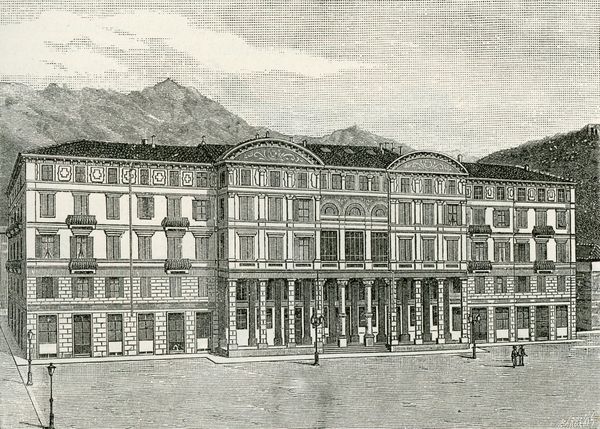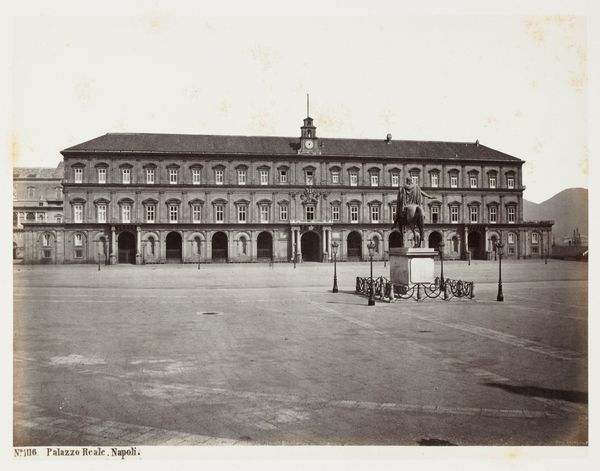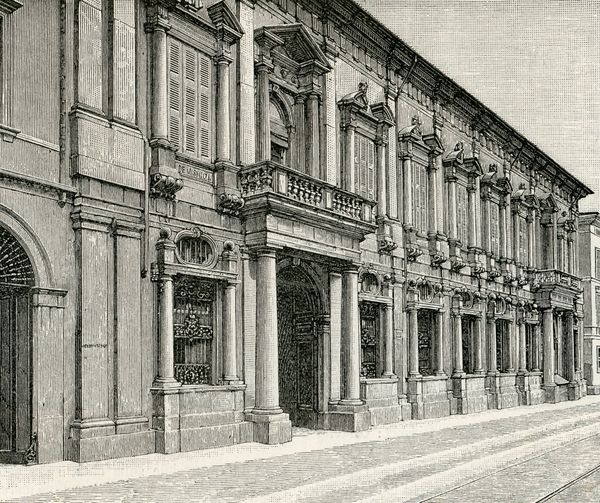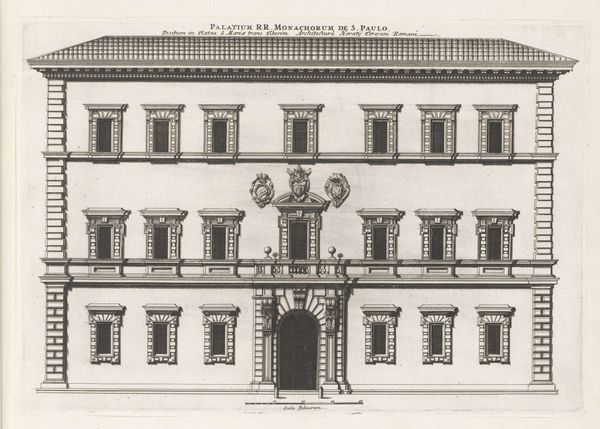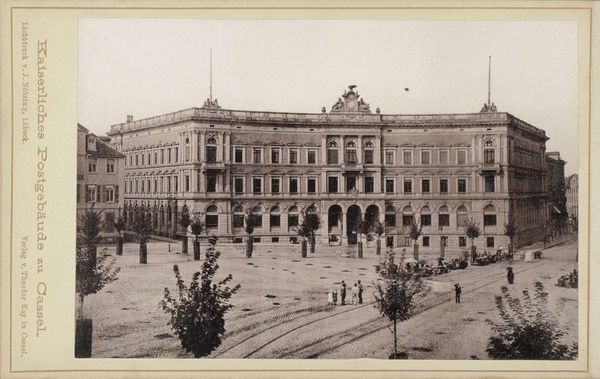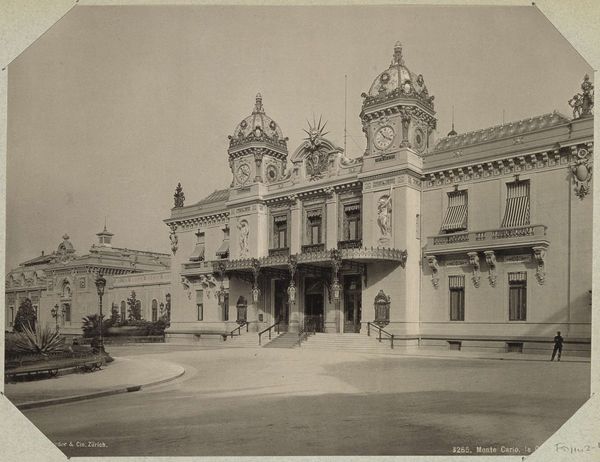
Copyright: Public domain
Curator: Before us is Giuseppe Barberis’s "Piazza Vittorio Alfieri," a print from 1890 created using ink and engraving on paper. What are your initial thoughts? Editor: Imposing. And yet, a touch sterile. The perspective is almost unnervingly perfect, rendering the architecture with impressive detail. But it lacks life, almost as if frozen in time. Curator: Indeed. The perspective and precision are quite striking, echoing Neoclassical ideals of order and balance. Squares such as this one became popular symbols of civic pride and rational urban planning. They project an image of power and control, reminiscent of a time when reason was prioritized. Editor: Control is definitely a key impression here. I'm drawn to the relentless repetition of the arched colonnades and the uniform windows. The lines are crisp and unforgiving, devoid of any painterly gesture. Even the tiny figures near the fountain are subsumed by the overwhelming architectural mass. Curator: The emptiness you note actually heightens the impact. Public spaces like these became stages for symbolic actions; they fostered both public participation and served as visible symbols of state power, as you pointed out. Editor: Right, the square as both an invitation and a silent declaration. It feels designed for collective identity. Though, there's a strange disconnect for me. The lack of visible activity almost mocks that ideal, doesn’t it? Curator: It certainly invites multiple interpretations! Perhaps it underscores the idealized vision of societal harmony that Neoclassicism often sought. Consider the use of engraving: that itself lends a sense of historical authority to the depicted subject. It feels somehow 'official'. Editor: A very calculated presentation. So while ostensibly celebrating a public space, Barberis presents a carefully curated image—less about spontaneous activity and more about permanence. I see the city less as lived in, and more like an exhibit of urban principles. Curator: Precisely. What resonates is the power embedded in creating a scene like this for posterity. And maybe that's the most enduring element: squares that are intended to be not only physical places, but symbolic markers within cultural memory. Editor: Perhaps that intended weight also underscores the actual, ephemeral moments which breathe life into such a scene: moments this very picture inadvertently seems to eclipse. Thanks for sharing it. Curator: My pleasure. This reminds us of how we can see public squares—and images of them—as carefully designed narratives and active participants in our ever-evolving story of place.
Comments
No comments
Be the first to comment and join the conversation on the ultimate creative platform.

